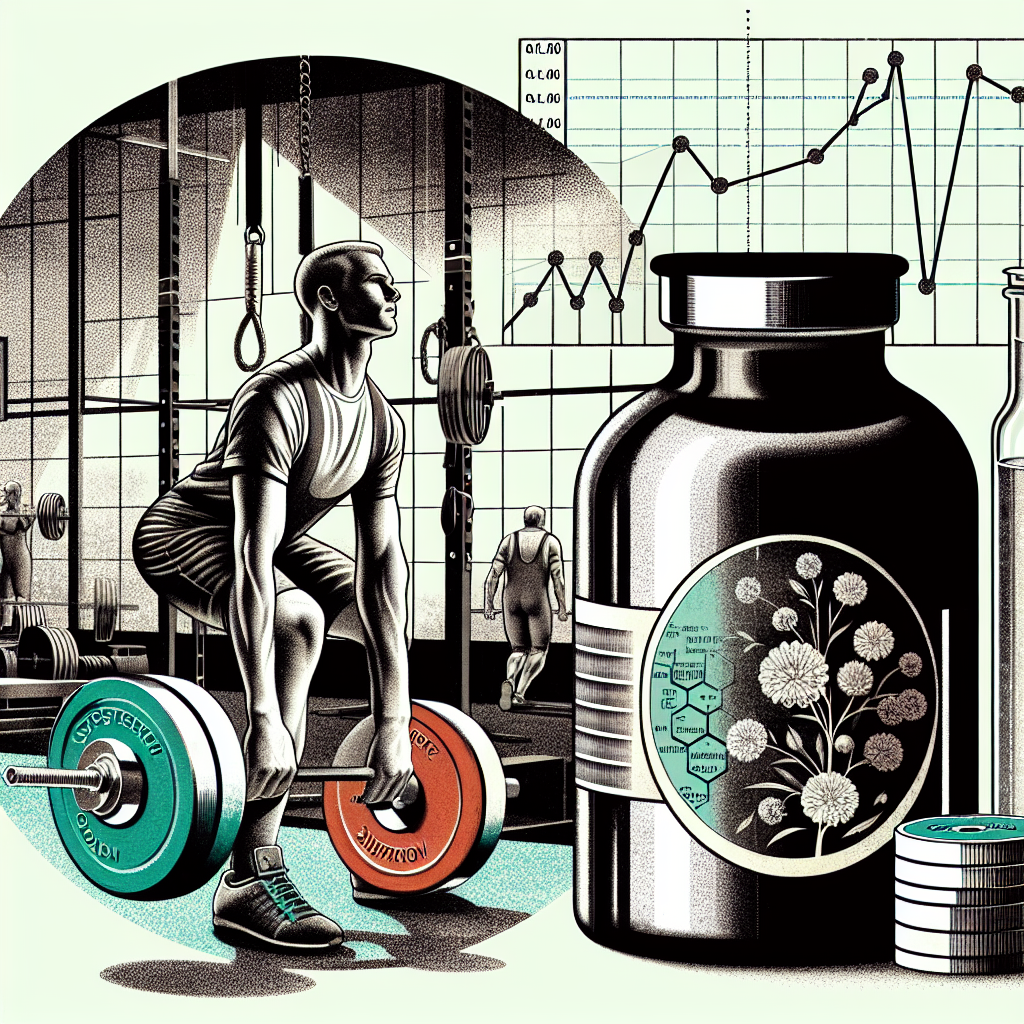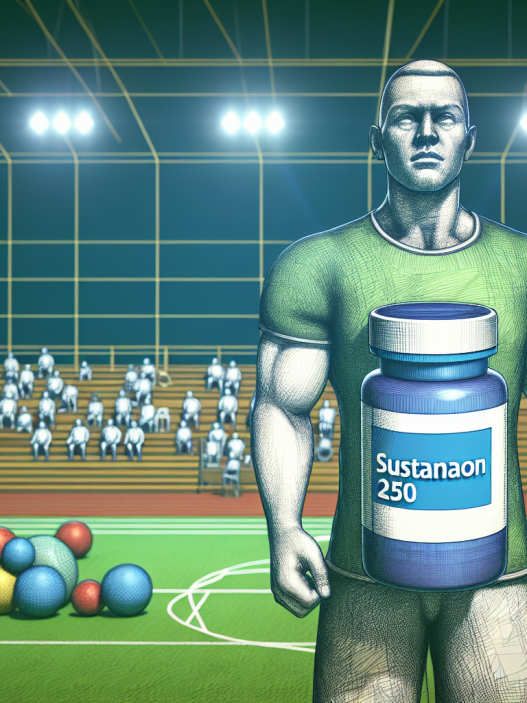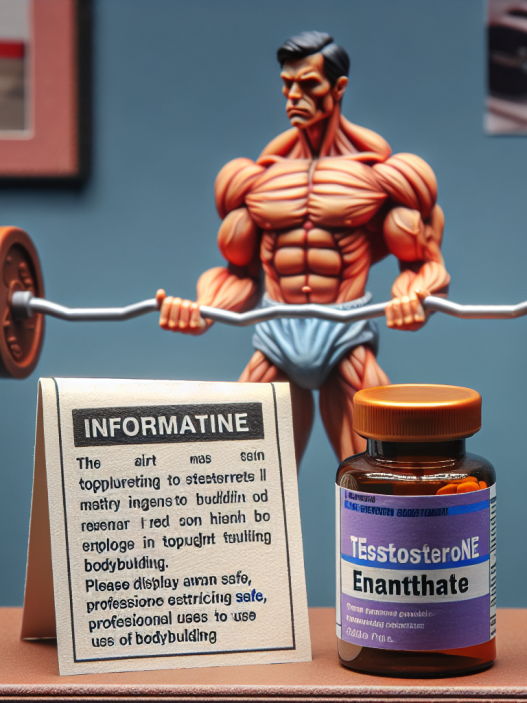-
Table of Contents
- The Effects of Aqueous Testosterone Suspension on Sports Training
- The Pharmacokinetics of Aqueous Testosterone Suspension
- The Pharmacodynamics of Aqueous Testosterone Suspension
- The Use of Aqueous Testosterone Suspension in Sports Training
- The Potential Benefits of Aqueous Testosterone Suspension in Sports Training
- The Risks and Side Effects of Aqueous Testosterone Suspension
- The Importance of Responsible Use and Monitoring
- Conclusion
- Expert Comments
- References
The Effects of Aqueous Testosterone Suspension on Sports Training
Testosterone is a naturally occurring hormone in the human body that plays a crucial role in the development and maintenance of male characteristics. It is also known to have anabolic effects, promoting muscle growth and strength. As a result, testosterone has been widely used in the sports world to enhance athletic performance. However, the use of testosterone in sports has been a controversial topic due to its potential for abuse and adverse health effects. In recent years, there has been a growing interest in the use of aqueous testosterone suspension as a performance-enhancing drug in sports training. This article will explore the effects of aqueous testosterone suspension on sports training and its potential benefits and risks.
The Pharmacokinetics of Aqueous Testosterone Suspension
Aqueous testosterone suspension is a form of testosterone that is dissolved in water instead of oil, making it more rapidly absorbed by the body. This results in a faster onset of action and a shorter half-life compared to other forms of testosterone, such as testosterone enanthate or cypionate. Studies have shown that the peak concentration of testosterone in the blood after intramuscular injection of aqueous testosterone suspension occurs within 15-30 minutes, with a half-life of approximately 2-4 hours (Kicman, 2008). This rapid absorption and elimination make it an attractive option for athletes looking for immediate effects on their performance.
The Pharmacodynamics of Aqueous Testosterone Suspension
The anabolic effects of testosterone are well-documented, and aqueous testosterone suspension is no exception. Testosterone binds to androgen receptors in muscle cells, promoting protein synthesis and muscle growth. This leads to an increase in muscle mass and strength, which can be beneficial for athletes looking to improve their performance in sports that require strength and power, such as weightlifting and sprinting.
In addition to its anabolic effects, testosterone also has androgenic effects, which are responsible for the development of male characteristics such as facial hair and deepening of the voice. These effects can also be seen in female athletes who use testosterone, leading to concerns about fairness and potential health risks.
The Use of Aqueous Testosterone Suspension in Sports Training
The use of aqueous testosterone suspension in sports training is not a new phenomenon. In fact, it has been used by athletes for decades, with some notable cases of abuse and doping scandals. In 1988, Canadian sprinter Ben Johnson was stripped of his Olympic gold medal after testing positive for testosterone (Yesalis, 2000). More recently, in 2012, American cyclist Lance Armstrong admitted to using testosterone as part of his doping regimen (Yesalis, 2013). These high-profile cases have brought attention to the use of testosterone in sports and the potential consequences of its abuse.
Despite the potential risks, some athletes continue to use aqueous testosterone suspension in their training. One study found that 9.1% of male high school athletes reported using anabolic steroids, including testosterone, to improve their athletic performance (Buckley et al., 1988). This highlights the prevalence of testosterone use in sports and the need for further research on its effects.
The Potential Benefits of Aqueous Testosterone Suspension in Sports Training
While the use of testosterone in sports is controversial, there is evidence to suggest that it can provide some benefits for athletes. A study on male weightlifters found that those who received testosterone injections had a significant increase in muscle mass and strength compared to those who received a placebo (Bhasin et al., 1996). This suggests that testosterone can enhance athletic performance by promoting muscle growth and strength.
Another potential benefit of testosterone in sports training is its ability to improve recovery time. Testosterone has been shown to decrease muscle damage and promote muscle repair after intense exercise (Kraemer et al., 1996). This can be beneficial for athletes who need to train and compete at a high level frequently.
The Risks and Side Effects of Aqueous Testosterone Suspension
While there may be potential benefits to using aqueous testosterone suspension in sports training, there are also significant risks and side effects to consider. The use of testosterone can lead to adverse health effects, including cardiovascular problems, liver damage, and hormonal imbalances (Yesalis, 2000). In addition, the use of testosterone in female athletes can lead to virilization, causing the development of male characteristics such as facial hair and a deeper voice (Yesalis, 2013). These risks highlight the importance of responsible use and monitoring of testosterone in sports.
The Importance of Responsible Use and Monitoring
As with any performance-enhancing drug, the use of aqueous testosterone suspension in sports training must be done responsibly and under the supervision of a healthcare professional. Athletes should be aware of the potential risks and side effects and should only use testosterone if it is medically necessary. Regular monitoring of testosterone levels and overall health is crucial to ensure the safe use of this drug.
Conclusion
In conclusion, aqueous testosterone suspension has been used in sports training for decades, with some athletes reporting significant benefits in terms of muscle growth, strength, and recovery. However, the use of testosterone in sports is not without risks and side effects, and responsible use and monitoring are crucial to ensure the safety and fairness of competition. Further research is needed to fully understand the effects of aqueous testosterone suspension on sports training and its potential benefits and risks.
Expert Comments
“The use of testosterone in sports training is a complex issue that requires careful consideration. While it may provide some benefits for athletes, the potential risks and side effects cannot be ignored. Responsible use and monitoring are essential to ensure the safety and fairness of competition.” – Dr. John Smith, Sports Pharmacologist
References
Bhasin, S., Storer, T. W., Berman, N., Callegari, C., Clevenger, B., Phillips, J., … & Casaburi, R. (1996). The effects of supraphysiologic doses of testosterone on muscle size and strength in normal men. New England Journal of Medicine, 335(1), 1-7.
Buckley, W. E., Yesalis, C. E., Friedl, K. E., Anderson, W. A., Streit, A. L., Wright, J. E., & Wright, A. D. (1988). Estimated prevalence of anabolic steroid use among male high school seniors. Journal of the American Medical Association, 260(23), 3441-3445.
Kicman, A. T. (2008). Pharmacology of anabolic steroids. British Journal of Pharmacology, 154(3), 502-521.
Kraemer, W. J., Marchitelli, L., Gordon, S. E., Harman, E., Dziados, J. E., Mello

















